After doing several experiments on the topic of water absorption into porous bricks, and comparing and cross-referencing the results, we made an interesting discovery about the mechanism of fast vs slow wetting.
Experimental Setup
Experiment 1: we applied water directly at the base of a brick placed in a tray. The water has been absorbed by the brick, rising almost to its top. This fast wetting is known as capillary effect.
Experiment 2: bricks have been placed on top of a 100 mm thick layer of slightly damp soil free of any drainable moisture. The moisture content of the soil could be controlled through wetting from the base, allowing humidity to freely evaporate into the bricks above it.
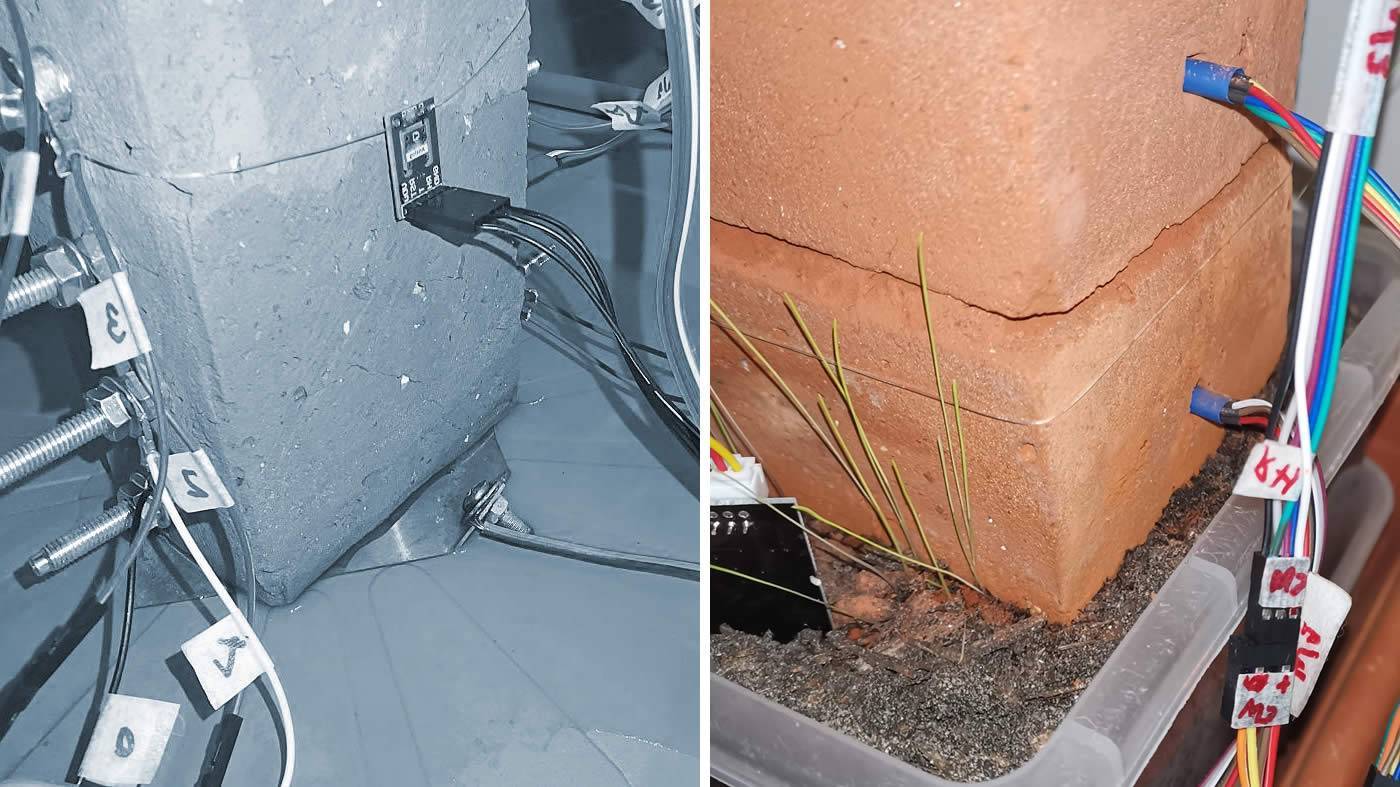
Fast vs slow wetting
Fast Wetting - Capillary Action
Dumping a large amount of water at the base of the brick creates a lot of significant, fast quick changes, both in terms of hygrothermal and electronic effects.
The presence of humidity is first detected by surface humidity sensors (blue and green lines), which react within seconds, as moisture can easily flow alongside the bricks, followed by the depth sensors a few minutes later, after humidity has found its way up inside the brickwork.
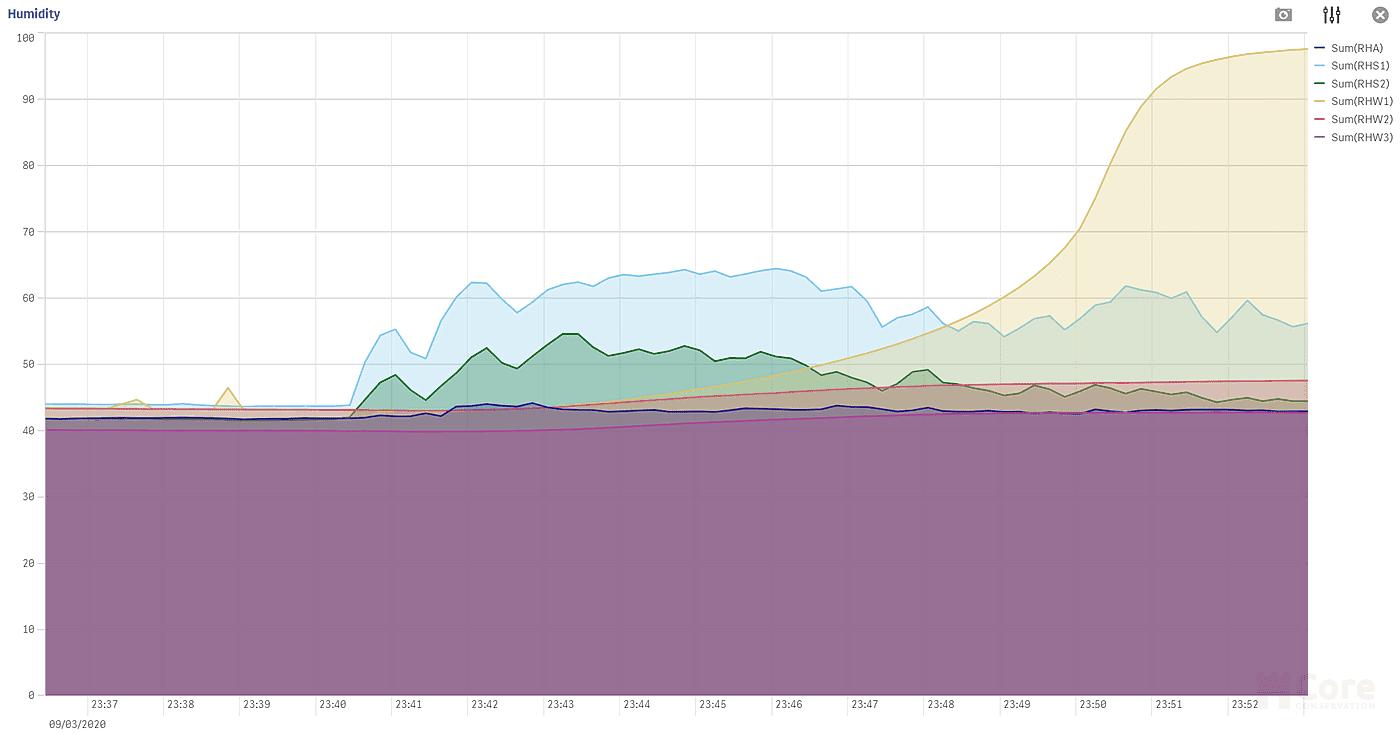
Surface humidity sensors react instantly, followed shortly by the depth sensors
From electronic standpoint: a lot of transient, fast occurring phenomena take place within the first few minutes of wetting. We can notice an overall fast rise of the voltage (purple line) up to about 200 mV, then a fast drop and reversal of the voltage within the first 8 minutes (at 23:47). This is a typical "electronic signature" we noticed in every wetting cycle.
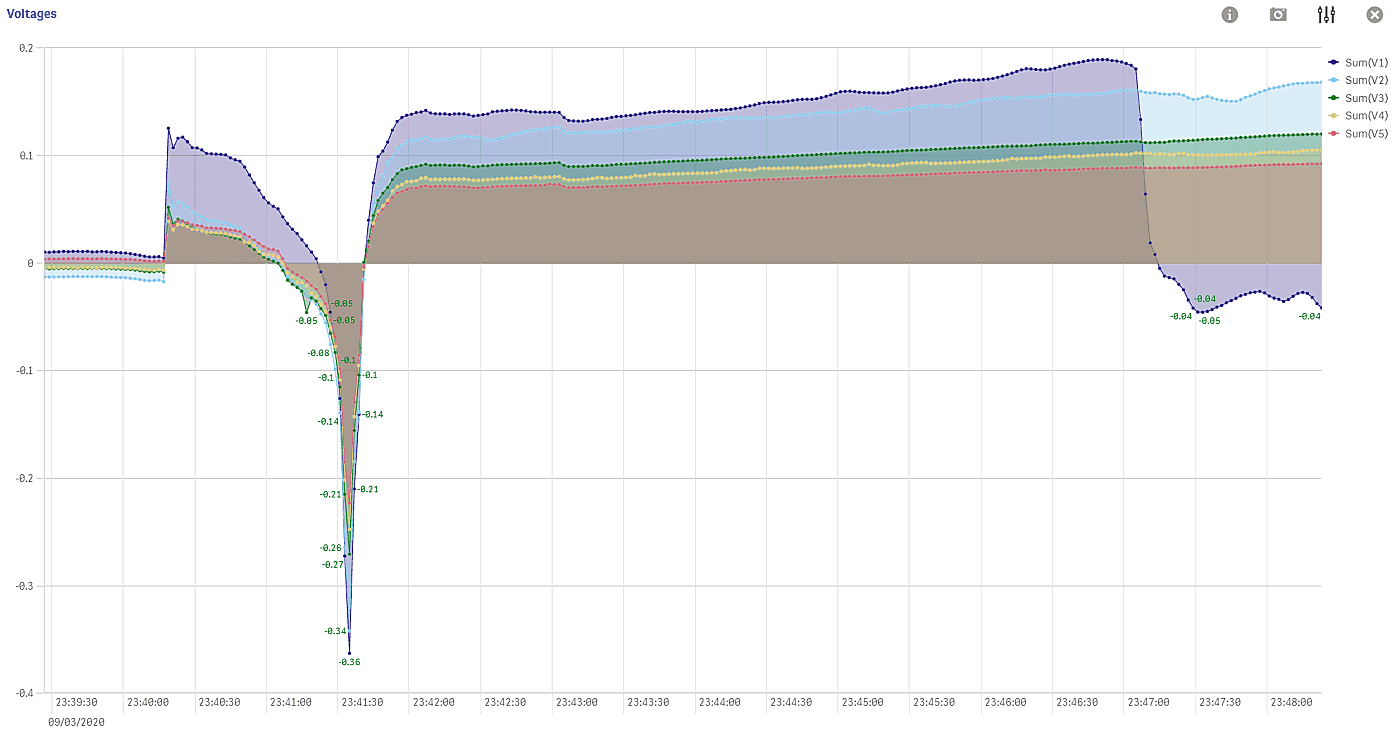
Fast paced electronic voltage changes inside the brickwork after wetting
Taking a closer look at the sudden voltage drop and reversal, we can see it occurs very fast, in less than 30 seconds, dropping sharply from about +190 mV to about -50 mV.
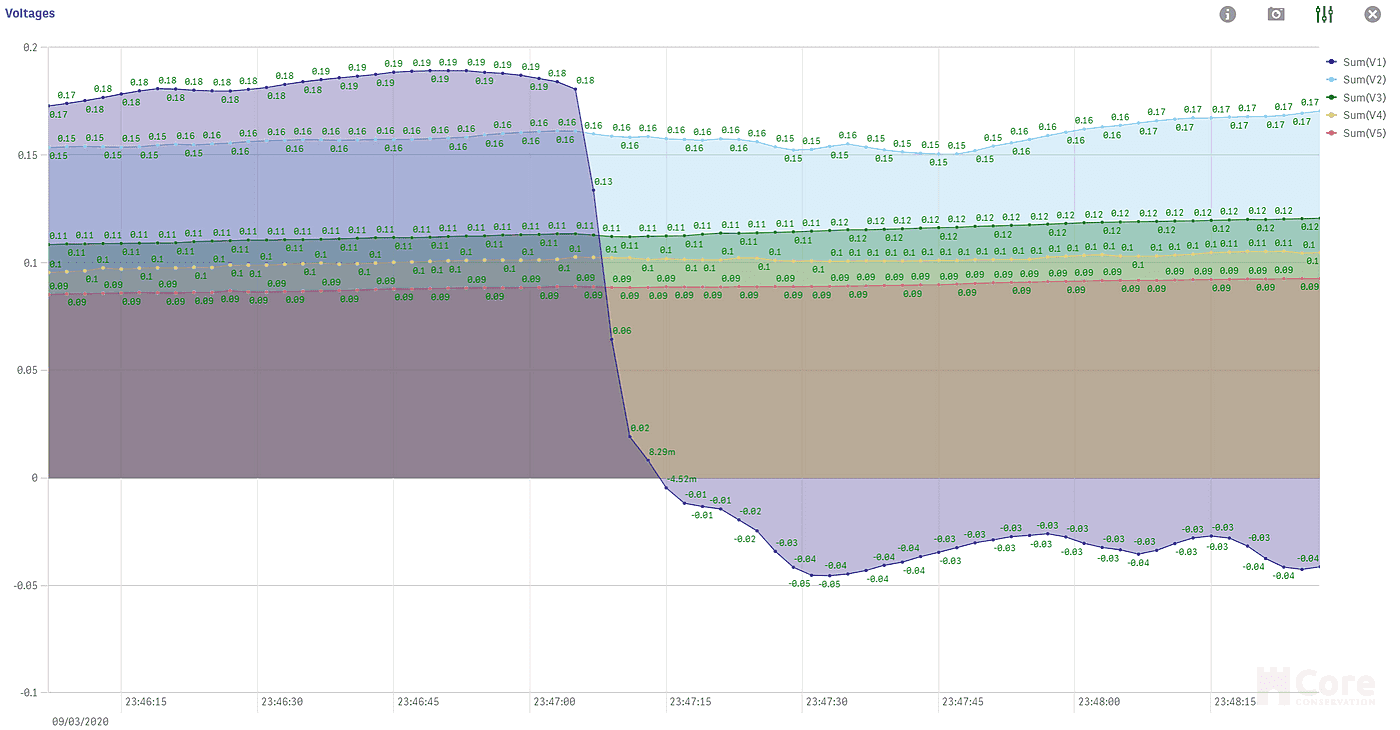
Fast voltage reversal within minutes after wetting
Slow Wetting - Evaporation from the Soil
Slow wetting is the typical wetting mechanism characteristic to old buildings which, sitting on the ground, slowly absorb moisture from the evaporating damp soil.
It was interesting to learn, that the wetting mechanism of both fast and slow wetting is fundamentally the same, showing very similar characteristics.
We placed the bricks onto the damp soil, letting it rest for 11 days, without any wetting. Moisture was first detected by the surface humidity sensor (blue line), followed by a slower increase of the humidity in-depth (yellow line), as moisture was slowly finding its way up though the porous material. Humidity levels in depth have stabilized at around 85-87%.
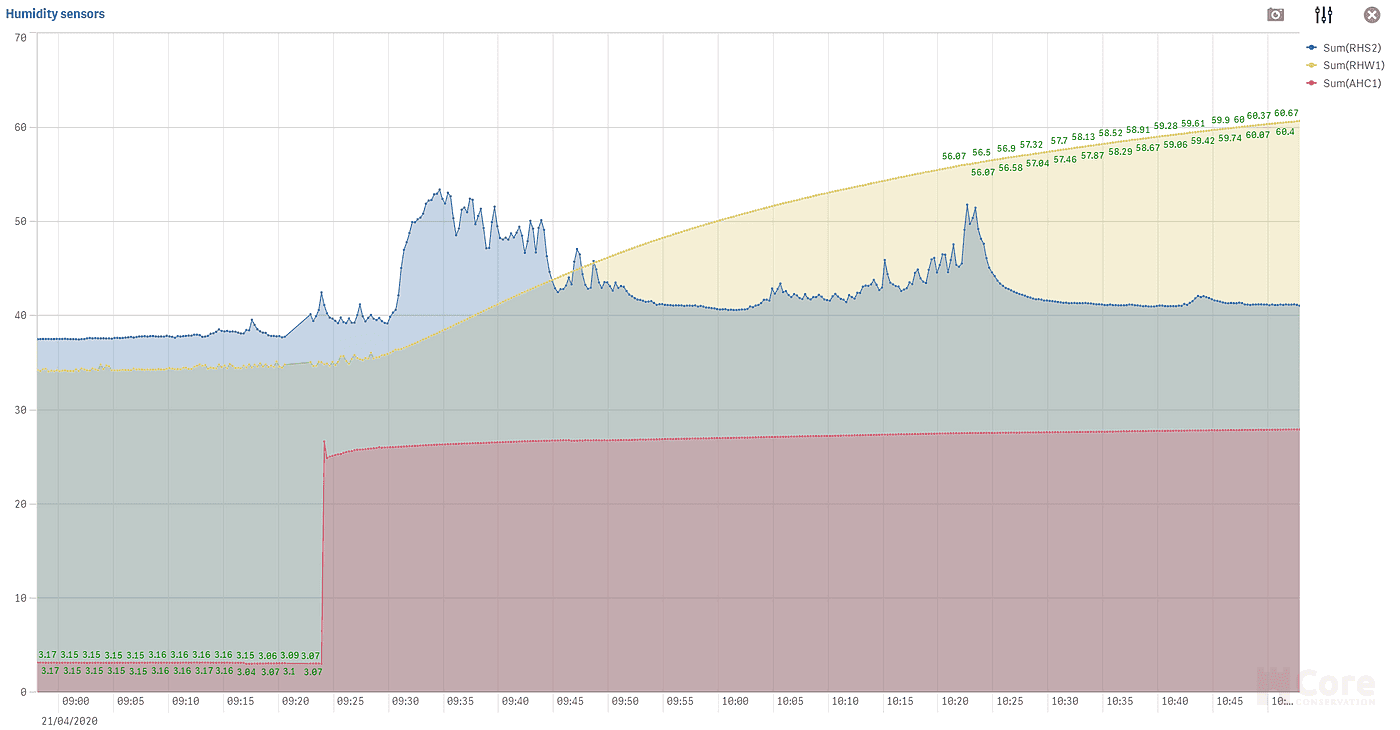
Surface vs depth humidity sensor reading
To explore the effect of wetting (via the soil), we wetted the soil on May 2nd. It took 3 full days of steady wetting until enough moisture has built-up in the lower brick to produce the reversal of voltage 3 days later, on May 5th.
The presence of moisture (red line) in the bricks is, again,
The voltage present in the brickwork (blue line) also has risen to about 200-250 mV, with some occasional 270 mV peaks. The bricks were placed onto a moist soil at the beginning of the experiment on April 21st, left alone for 11 days, with no wetting. After the initial build-up of moisture, the humidity levels in the bricks during this time were pretty stable, with a bit decrease towards the end of the period.
To explore the direct effect of wetting, we first wetted the soil on May 2nd. It took 3 full days of steady wetting until enough moisture has built-up in the lower brick to produce the reversal of voltage 3 days later, on May 5th.
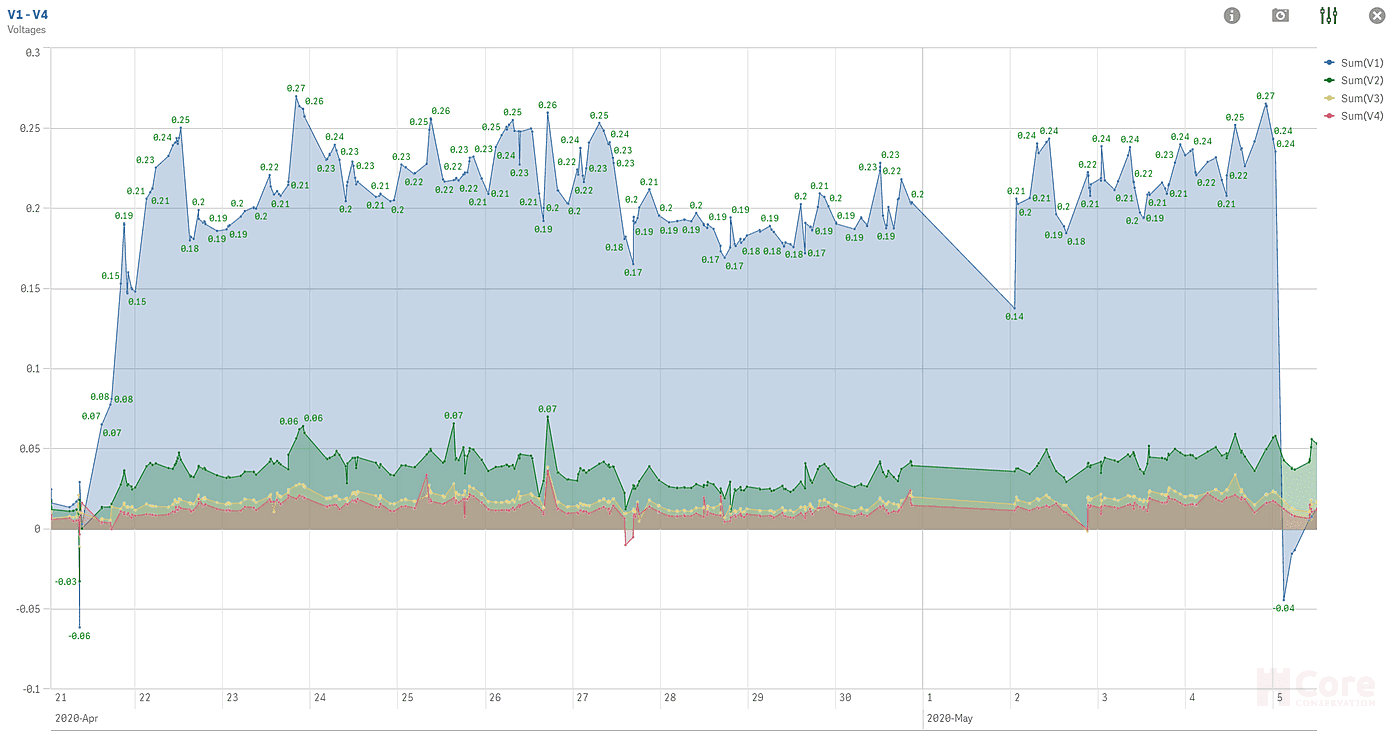
Voltage changes in the bottom brick as a result of moisture evaporation from the soil
The nature of voltage reversal was very similar to the fast wetting, but here it occurred much slower, taking about 10 minutes (from 2:47 to 2:57) for the voltage to drop from +190 mV to around -40 mV.
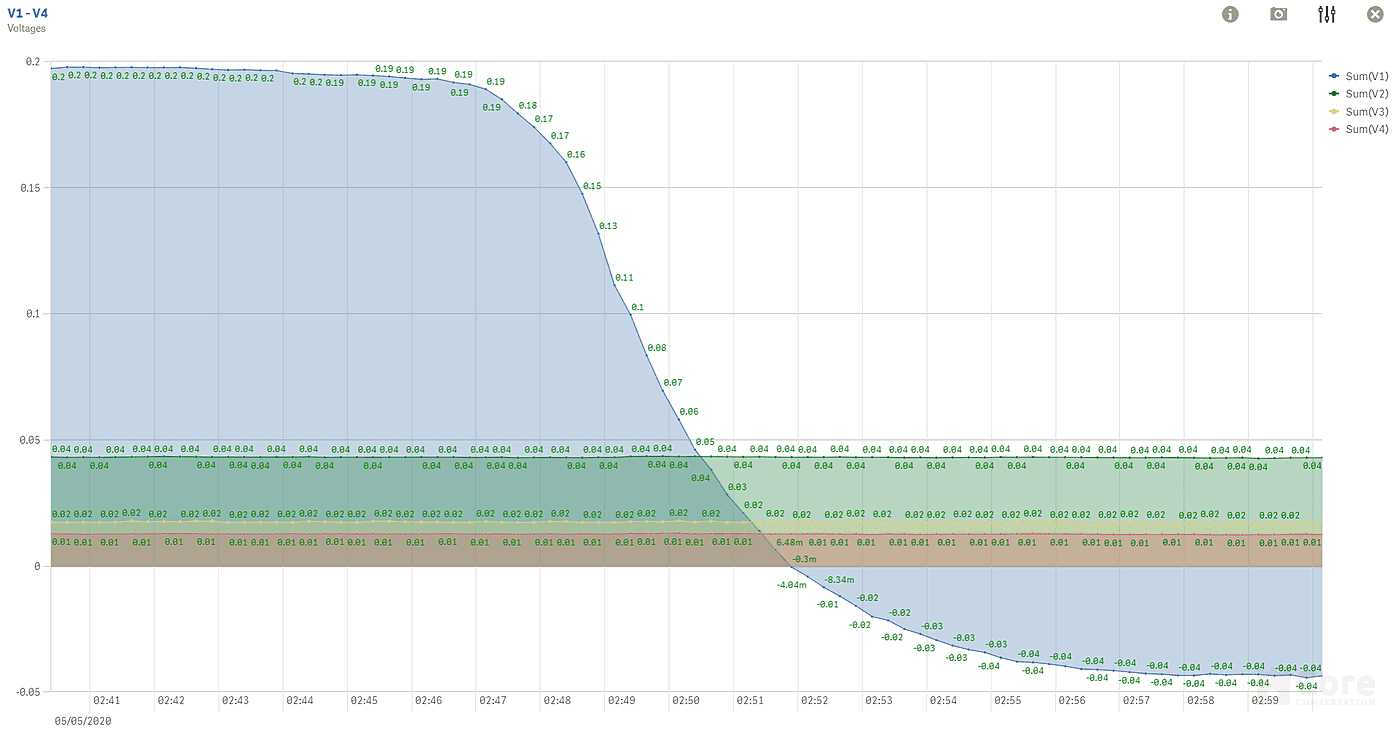
A much slower voltage reversal in this case
Some of the differences in speed between the effects of the 2 wetting scenarios:
- The humidity buildup from zero to reaching the critical humidity levels to create a reversal of the voltage took 8 minutes during direct wetting vs. about 3 days (4,320 mins) with indirect wetting of the soil - a 550X speed difference.
- The voltage reversal itself, a change from about +190 mV to -40 mV, took 30 seconds in the first case vs 10 minutes of the second case - a 20X speed difference.
Conclusions
We can draw from here the following conclusions:
- The fast vs slow wetting shows very similar characteristics, denoting similar phenomena at play, occurring at significantly different speeds.
- Rising damp is known to be caused by capillary action - a rise of liquid moisture inside the capillaries - a characteristic of fast wetting. However slow wetting, being similar in nature to fast wetting, it also produces similar phenomena to fast wetting. Thus the outcome of both processes long-term is the same.
Our experimental findings in this regard are in line with other findings from the German literature, indicating that rising damp is not only capillary action but a combination of several mechanisms, liquid capillary flow just being ONE of the many contributing mechanisms of rising damp. - Role of drainage: the moisture saturation of the soil is an important parameter in how fast moisture rises. Less soil moisture means slow moisture uptake (slow wetting), while a moisture saturated soil can speed it up (fast wetting). However, even with drainage in place, because walls are sitting on the damp soil, the slow moisture evaporation long-term will add up, resulting in wetting and rising damp. Even if it will take 50-100 years.
- Because the fast and slow wetting methods are very similar phenomena, occurring at different speeds, for lab simulation, to gain insight into some of the key mechanisms of rising damp, fast wetting is a valid study methodology.








